ARTICLE SHORTCUTS
What Does the Vagus Nerve Do? | What Is the Gut-Brain Axis? | How to Improve Vagal Tone
Imagine your brain with a periscope-like appendage, one that tunnels deep into your body to see how all your organs are faring. Since you’re using your imagination, make that appendage the world’s fastest pneumatic tube. Watch messages zooming back and forth between your brain and your immune cells, endocrine system, and microbiome.
This sounds like sci-fi, yet we all have a version of that tool right now. It’s called the vagus nerve, and it may be the most important body part you’ve never heard of.
“Just as you use your eyes to take in the world around you, your brain uses the vagus nerve to get a detailed sense of your body’s inner experience,” says integrative psychiatrist Drew Ramsey, MD. “The vagus nerve has its fingers in almost all of the bodily organs. It modulates hunger, manages stress, and regulates the immune response, including inflammation.”
It also helps govern a range of bodily functions. “If you have ever swallowed, coughed, sneezed, pooped, or been nauseated, then you’ve experienced the vagus nerve in action,” says functional-medicine practitioner Gregory Plotnikoff, MD.
The vagus is one of 12 pairs of cranial nerves that emerge from the brain, but it’s the only one that extends down into the body. Like all nerves, the vagus is a bundle of fibers encased in connective tissue. The vagal bundle includes both sensory and motor nerves, meaning it can transmit sensations, like temperature and pain, as well as control motor impulses, such as heart rate, swallowing, and the gag reflex.
The word “vagus” means “wandering,” apropos given that the nerve starts at the brainstem and meanders down into the torso, where it unfurls tendrils like a creeping vine. These extend into the heart and lungs, while the nerve’s primary stalk extends through the abdominal cavity and reaches as far as the colon. It serves as a concrete connection between the brain and the gut — as well as other bodily systems.
Many people mistakenly believe their organs operate in isolation, says Plotnikoff. “They picture their intestines as isolated from their heart, their lungs isolated from the bladder, and so on.” There’s a conventional medical view of the body as a machine with parts that can be repaired without addressing the whole, he says. “But the vagus nerve disrupts all of that.”
The vagus is the body’s through line, a conduit of interconnectedness.
“Think of the vagus nerve like a switchboard operator,” says Ramsey. “It passes all kinds of messages back and forth between the organs and the brain.” And roughly 80 percent of those messages are carrying data about the state of the organs.
“Once you see how the vagus nerve connects every system in the human body,” says Plotnikoff, “you must open your eyes to a new understanding of the human body.”
What Does the Vagus Nerve Do?
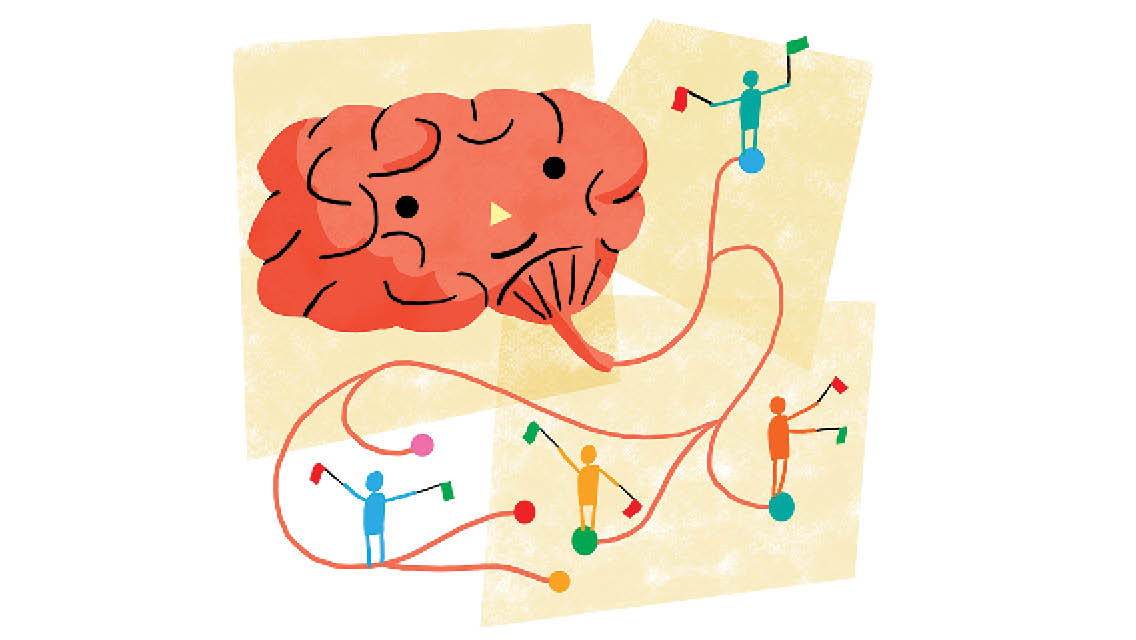
The nervous system is a marvel of multitasking. In any given moment, our lungs take in and exhale air, our hearts pump blood, and our digestive systems extract energy from food. Countless such involuntary biological functions are orchestrated simultaneously by the autonomic nervous system (ANS), which frees up brain space for us to think, create, and engage with the world.
The first branch of the ANS is the sympathetic nervous system (SNS). It scans for danger and puts the body on alert. This fight-or-flight response often gets a bad rap for triggering stress hormones, like cortisol, but this state of alertness also enables athletes to score goals, lawyers to argue court cases, and pedestrians to navigate busy intersections.
The second branch is the parasympathetic nervous system (PNS), responsible for the counterpoint to fight-or-flight: rest-and-digest. When the PNS takes over, it dials down blood pressure, deepens the breath, and directs blood toward digestive and reproductive organs. In short, it helps us chill out.
“The feeling after lovemaking is as close to a complete parasympathetic mode as one can get,” says physical therapist and craniosacral-therapy instructor Mariann Sisco, PT, CST-D. “You feel loved, safe, and deeply relaxed.”
Ideally, we toggle between these modes many times a day. “We absolutely need both,” Sisco says. “If I am going to cross a busy street, I want to be on high alert. But once I am on the other side, I want [the SNS to stand down] so I can go back to relaxing and enjoying my surroundings.”
The vagus nerve determines how well we’re able to shift between these systems. It stays poised, acting like a brake on the fight-or-flight response.
The vagus nerve determines how well we’re able to shift between these systems. It stays poised, acting like a brake on the fight-or-flight response, says Sisco. “When it senses potential danger, it releases the brake, allowing the sympathetic nervous system to roll forward. When it perceives safety, it puts on the brake, which allows the parasympathetic to take over.”
This process reminds us that both capacities — vigilance and relaxation — are critical to survival. “Early humans had to navigate a dangerous world so they could survive long enough to procreate,” says neurologist and functional-medicine practitioner Kenneth Sharlin, MD, MPH.
He notes how a noxious smell can make you cough or how rancid food can induce a gag response. “Both of those involuntary reflexes are examples of the vagus nerve sensing danger and using its influence to protect the body.”
“Just look at where the nerve is located,” says chiropractor and functional-medicine practitioner Navaz Habib, DC. “From the brain, it enters the neck along with the jugular vein and the carotid artery, which are the two most important blood vessels for our overall function and life.”
What Is the Gut–Brain Axis?
The third branch of the ANS is located in the gut: the enteric nervous system (ENS). The ENS is found in the millions of nerve cells lining the walls of the gastrointestinal (GI) tract, and it’s so large and information-rich that it’s sometimes called the second brain.
The idea of an axis connecting the gut to the brain sounds like a metaphor, but it’s not, says Habib. This route communicates information about digestion, nutrient status, and the microbiome to the brain.
And because the vagus nerve controls peristalsis — the wavelike action of the GI tract that keeps things moving toward the exit — it’s intimately involved in digestion and elimination.
When you feel nauseated during a dinnertime argument or become constipated from the stress of travel, that’s a sign that the vagus nerve is refusing to switch gears because it still detects danger.
When you feel nauseated during a dinnertime argument or become constipated from the stress of travel, that’s a sign that the vagus nerve is refusing to switch gears because it still detects danger. “You can’t activate a rest-and-digest process while in fight-or-flight,” Habib explains.
The vagus nerve also moderates the immune system, 70 to 90 percent of which is housed in the gut. When the SNS releases the activating hormone adrenaline, the vagus signals the release of an inflammation-dousing neurochemical called acetylcholine. A potent anti-inflammatory, acetylcholine can calm an overactive immune response and reduce inflammation.
This balancing act is designed to prevent runaway inflammation, but everyday stressors can push it to the breaking point, which may help explain the rise of autoimmune disorders. (For more on autoimmune conditions, see “Why Autoimmune Diseases Are on the Rise — Especially After COVID“.)
How to Improve Vagal Tone
How well your vagus nerve is holding up can be measured by its tone. In general, the higher one’s vagal tone, the better. “High vagal tone typically indicates that the autonomic nervous system is modulating the stress response appropriately,” says Sisco.
Low vagal tone may signal that a person is stuck in the hypervigilance of the SNS. Signs include rapid resting heartbeat, clamminess, shallow breathing, and restlessness.
Most of us know how it feels to get stuck in this type of stress reaction, but it is also possible to have a dysregulated parasympathetic response. When we’re overly isolated or facing ongoing trauma, a primitive part of the PNS triggers the dorsal vagal state, which causes us to freeze up, explains Sisco. This can leave us depressed, withdrawn, or emotionally numb. Over time we might begin to avoid people and places we once enjoyed.
When we’re overly isolated or facing ongoing trauma, a primitive part of the PNS triggers the dorsal vagal state, which causes us to freeze up. This can leave us depressed, withdrawn, or emotionally numb.
Some experts believe that the most reliable measure of vagal tone is heart-rate variability (HRV). HRV — the variation in time between heartbeats — is partly regulated by the vagus nerve. Perhaps counterintuitively, the more variation, the better. It means the vagus is responding to external signals and isn’t stuck in one mode or the other. (For more on HRV, see “How Heart-Rate Variability Affects Your Stress Response“.)
Plenty of wearables track HRV. The wrist or finger devices may be the easiest to wear for longer periods of time and may help elucidate patterns. According to some experts, HRV monitors offer a rough sense of how well your vagus nerve recovers once a stressor has ended.
When the nervous system is in fight-or-flight, HRV is low. When the nervous system is relaxed, HRV is high. The healthiest nervous system moves fluidly between high and low without getting stuck.
“When our bodies go into fight-or-flight, the episode should have a beginning, middle, and end,” says Sharlin. “We have to get through our days without being stymied. There will always be stressful events, but how well we navigate those stressors combined with our ability to recover is the definition of stress resilience.” (For more on the stress cycle, see “Complete the Stress Cycle“.)
“Have you ever been around someone who you find deeply annoying but someone else in the room tolerates fairly well?” asks Sisco. “For the person who easily stays calm in the face of an annoyance, the stress will have less wear and tear on their body.”
4 Ways to Reset the Vagus Nerve
One of the best ways to build more resilience is to deliberately stimulate your vagus nerve. Because the SNS is always monitoring our surroundings, while the PNS switches on and off intermittently, stimulating the vagus can make those periods of parasympathetic activity more frequent, says Sisco.
This stimulation has been clinically proven to help people who have life-threatening conditions, such as hard-to-treat epilepsy or treatment-resistant depression. In such cases, a medical device may be implanted near the vagus. Electrical signals from the device, similar to a pacemaker, prompt it to exert its influence.
Other vagal-stimulation treatments are also in the works. An external device won Food and Drug Administration (FDA) approval in 2017 for the treatment of cluster headache and acute migraine. More are in the pipeline.
“We are going to see more and more types of vagus-nerve stimulators for anxiety, depression, and eating disorders,” predicts Plotnikoff. “People are already doing vagus-nerve blocks for PTSD-related concerns and getting fabulous results.”
The vagus nerve is involved in the successful use of auricular acupuncture, which focuses strictly on ear points. A small branch of the nerve — the auricular branch — nears the surface of the skin on each ear. The auricular branch of the vagus is mostly sensory, meaning it senses touch, temperature, and moisture on the skin on the inside of the ear; it provides an easy access point for stimulation with acupuncture and acupressure.
Various traditional practices, such as massage, reflexology, craniosacral therapy, yoga, and tai chi, also activate the PNS, which improves vagal tone. “All of this research on the vagus nerve has reaffirmed traditional wisdom around ancient practices,” says Plotnikoff.
The following exercises allow you to indirectly stimulate the vagus nerve on your own.
1. Breathe Deeply
Deep breathing stimulates pressure receptors in the neck and heart that signal the brain that it’s time to rest and digest. “Deep, calm, diaphragmatic breathing is the No. 1 way to send parasympathetic signals to all of the organs,” says Habib. “Everything revolves around the breath.”
For best results, sit up straight. Exhale completely. Put your right hand on your chest and your left hand on your belly. Breathe deeply through your nose for five to seven seconds, inflating just your belly. Hold the breath for two to three seconds. Exhale through your mouth for six to eight seconds, allowing the belly to fall. Hold the breath out for two to three seconds. Practice increasing your tolerance until you can do this exercise for five minutes per day.
(For more breathing exercises, see “6 Breathing Techniques“.)
2. Gargle
 Gargling stimulates the vagus nerve by activating the laryngeal and pharyngeal muscles at the back of the throat. Habib recommends keeping a cup beside the bathroom sink and using it to gargle water vigorously twice a day, ideally when you brush your teeth. “You know you are doing it properly if you gargle to the point of tearing up.”
Gargling stimulates the vagus nerve by activating the laryngeal and pharyngeal muscles at the back of the throat. Habib recommends keeping a cup beside the bathroom sink and using it to gargle water vigorously twice a day, ideally when you brush your teeth. “You know you are doing it properly if you gargle to the point of tearing up.”
3. Hum or Chant
 The vagus supplies motor signaling to the muscles of the larynx around the vocal cords. Humming and chanting activate the laryngeal muscles and the vocal cords, which then stimulate the motor fibers of the vagus nerve. Habib recommends making a habit of humming or chanting during your commute or while walking the dog. If you choose to chant, try using the word “om” or “amen” and holding the vibration for as long as you can while stretching out the exhale.
The vagus supplies motor signaling to the muscles of the larynx around the vocal cords. Humming and chanting activate the laryngeal muscles and the vocal cords, which then stimulate the motor fibers of the vagus nerve. Habib recommends making a habit of humming or chanting during your commute or while walking the dog. If you choose to chant, try using the word “om” or “amen” and holding the vibration for as long as you can while stretching out the exhale.
(Learn more at “The Healing Power of Sound“.)
4. Take a Cold Shower
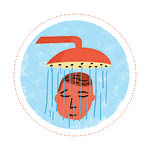 At the end of your normal shower, reduce the water temperature as much as you can bear and let the water wash over your head and the back of your neck. Begin with 30 seconds and gradually work your way up to a few minutes. While standing under the cold shower, work on controlling your breath by taking as many deep belly-breaths as possible, says Habib. “The cold acts like a 50-pound weight on your diaphragm. The end result is a strong vagus nerve and an optimally functioning parasympathetic nervous system.”
At the end of your normal shower, reduce the water temperature as much as you can bear and let the water wash over your head and the back of your neck. Begin with 30 seconds and gradually work your way up to a few minutes. While standing under the cold shower, work on controlling your breath by taking as many deep belly-breaths as possible, says Habib. “The cold acts like a 50-pound weight on your diaphragm. The end result is a strong vagus nerve and an optimally functioning parasympathetic nervous system.”
(Learn more at “The Health Benefits of Cold Conditioning“.)
This is Your Vagus Nerve on Lockdown

For most of us, the vagus nerve has taken a beating during the pandemic. “We are social creatures,” says chiropractor and functional-medicine practitioner Navaz Habib, DC, author of Activate Your Vagus Nerve: Unleash Your Body’s Natural Ability to Heal. “The fact that we’ve been afraid to be around other people has been a major stressor.”
Positive social interactions stimulate the vagus nerve, which connects to a network of cranial nerves. Some of those nerve branches are in the face. When you smile or laugh, the vagus gets goosed, which activates your parasympathetic nervous system.
Meanwhile, during the pandemic, many of us have gone days, weeks, and months with limited to no social interaction. “For that reason, the pandemic is being referred to as ‘a collective trauma,’” says physical therapist Mariann Sisco, PT, CST-D.
During the pandemic-related lockdowns, Sisco, who lives alone, went out of her way to say hello to neighbors on the sidewalk or the grocery worker at the checkout line. “I took every opportunity to smile, make eye contact, use their name, and ask how their day was going; these small but intentional moments of making a meaningful social connection got me through.”
Sisco notes how masks — while life-saving — have also made it difficult to recognize familiar safety cues. This can amplify our sense of alarm. “Not being able to see people’s facial expressions, especially their mouths to see if they were smiling or not, [can be] intrinsically stressful for the nervous system.”
Masks also require us to raise our voices to be heard, she adds. “For many people, the very act of talking loudly or even hearing a raised voice directed at them can be stressful.”
And then there’s the biggest stressor of them all: the fear of contagion and being contagious. Many of us have found that no matter how much we may have missed certain experiences (dinner parties, live music, going to the gym), when we finally do these things again, they trigger as much anxiety as delight. Habib emphasizes that this is a nervous-system response, and it can take time to retrain it.
There’s also no point in comparing your timing with others’. Inevitably, some of us will bounce back faster. The capacity for recovery is a big part of stress resilience, and some of us have more or less of it.
“Trauma affects people differently,” says neurologist and functional-medicine practitioner Kenneth Sharlin, MD, MPH. “Our bodies are vessels of information, which we acquire through our experiences in life, some of which comes by way of trauma. What we learn from that trauma and how we react to future situations that remind our brains of that trauma, either consciously or unconsciously, becomes a critical factor that determines how we navigate our world.”
He notes that when the nervous system is deeply dysregulated, patients may present with conditions like postural orthostatic tachycardia syndrome (lightheadedness when rising from a reclining position), gastroparesis (partial paralysis of the stomach), and chronic fatigue syndrome. “I attribute it not to direct damage to the vagus nerve but adaptive damage.”
According to Stephen Porges, PhD, a pioneer in studying the vagus, the nerve includes an ancient vestige of early humans called the dorsal vagal circuit, which stimulates the freeze response. When people get stuck in dorsal vagal activity, they can withdraw and shut down. Their heartbeat slows, their blood pressure drops, and they might feel dizzy or even faint (vasovagal syncope). Emotionally, they may experience apathy, hopelessness, and an inability to set goals or motivate.
The key to once again navigating social situations is to practice patience and compassion for ourselves and others, says Sisco. “We have to offer our vagus nerve opportunities to relearn what is safe and not safe.” And that will be unique to each of us.
We have more power to support our nervous systems than we realize. “Most people understand the concepts of fight-or-flight and rest-and-digest, but what they don’t understand is that minute by minute their body is prioritizing one over the other,” says Plotnikoff. “And you can choose to set the priority.”
This article originally appeared as “What Happens in the Vagus” in the March 2022 issue of Experience Life.
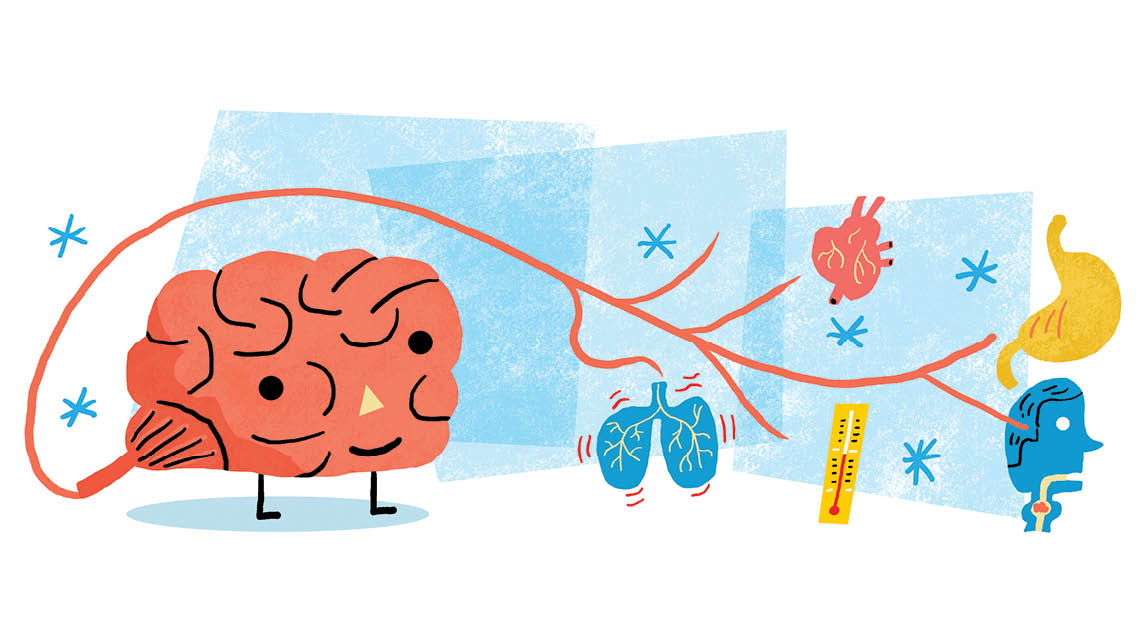
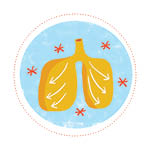

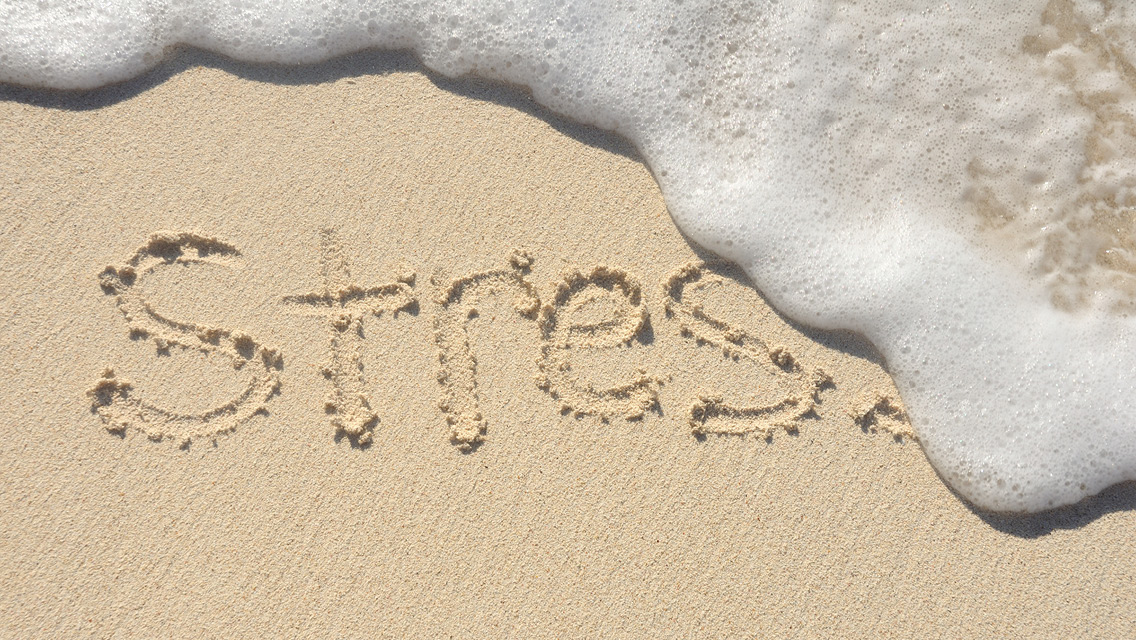
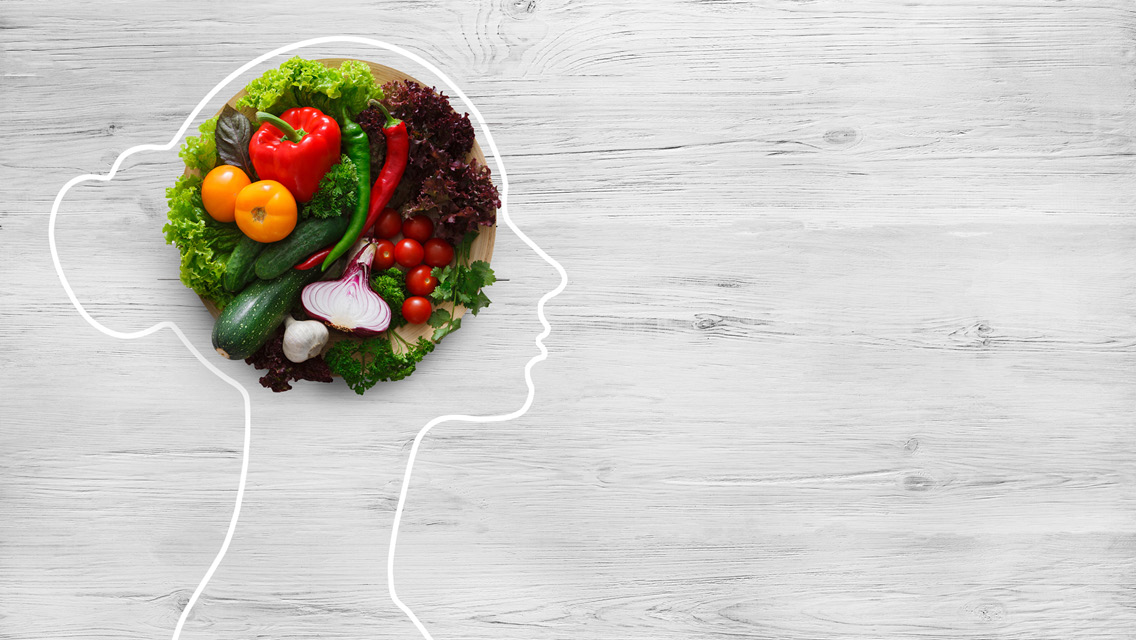

This Post Has 7 Comments
What an insightful article. Good to know that ancient wisdom has so much truth to it. Will try to practice these techniques.
I am so happy to read your article about the vagus nerve as I am just trying to understand how it works and how to re-set my stress response. Thank you for sharing this work. — Merle Plotkin
Thank you for this information. I am elderly and have been experiencing migraines. I have used some of these exercises and found they have helped. Now I will have more info to use in my fight against this problem.
I’m a physical therapist for 23 years who has just begun to understand the need for a strong functioning vagus nerve. I’ve been giving my patients vagus nerve exercises for the past 9 months and they are life changing!!! I primarily treat vertigo and it’s quite incredible how many patients with vertigo experience dorsal vagal shutdown as everything in their environment feels overwhelming and threatening to them, especially those with post-Covid inflammation. By not only implementing vestibular exercises in conjunction with vagus nerve exercises, these patients respond so much faster and feel more in control of their lives! It has taken my career and my patient’s lives in a completely new direction and feeling amazing again!
I really enjoyed this article. Thank you.
Very informative. Thank you!!!
This was a fascinating article, particularly as it related the vagal response to the stresses of the pandemic. It also reminded me of some of the practices, such as abdominal breathing and humming, that have helped calm me in stressful situations. I’ll be resuming those practices now. Thank you.